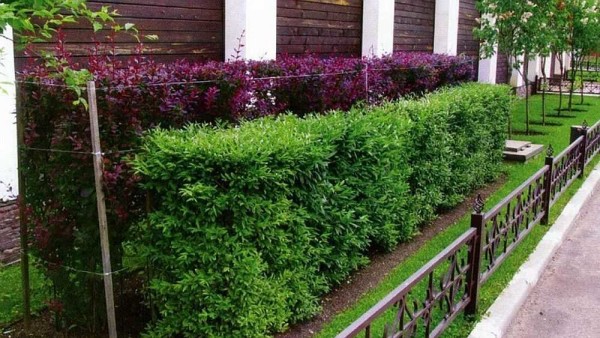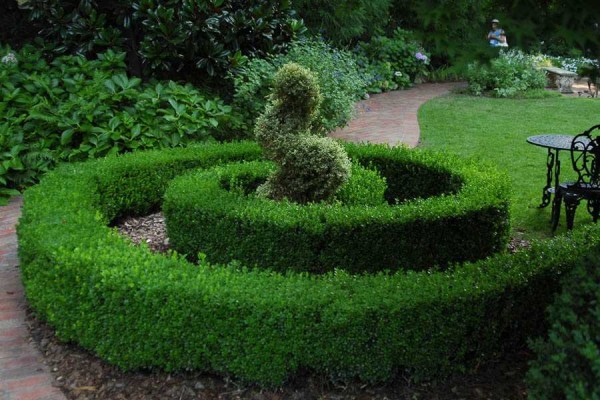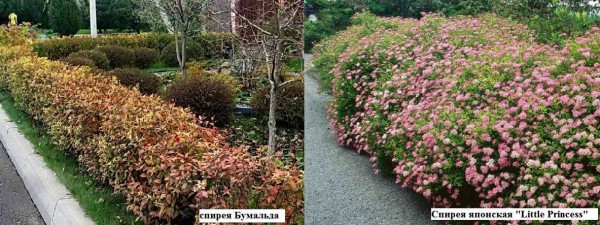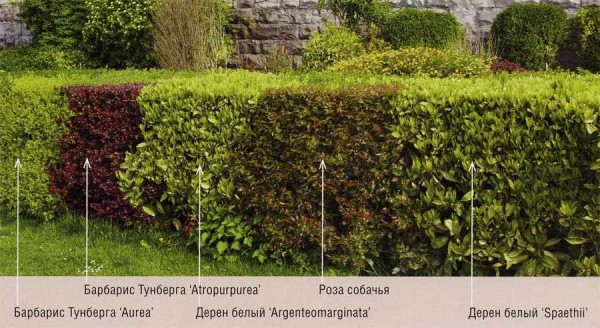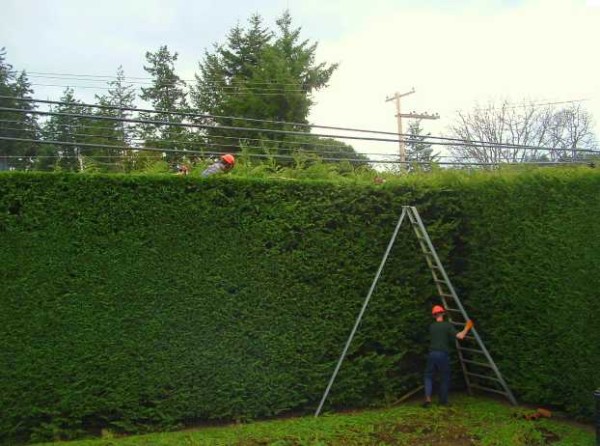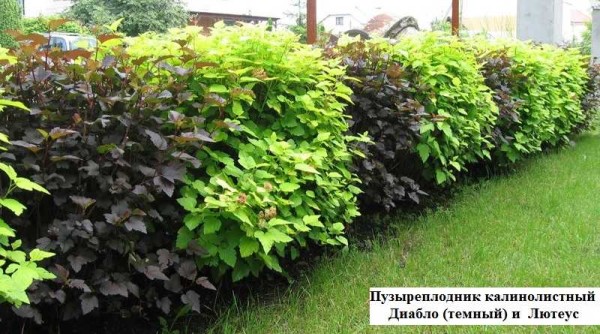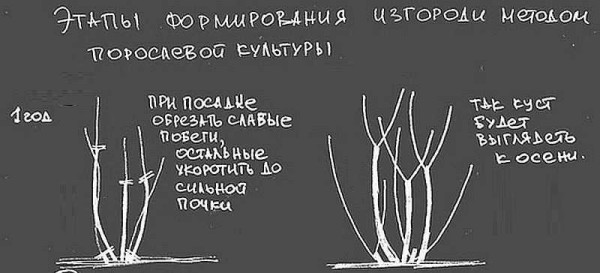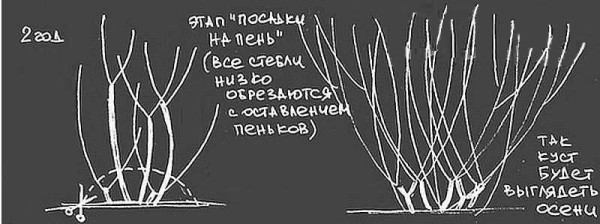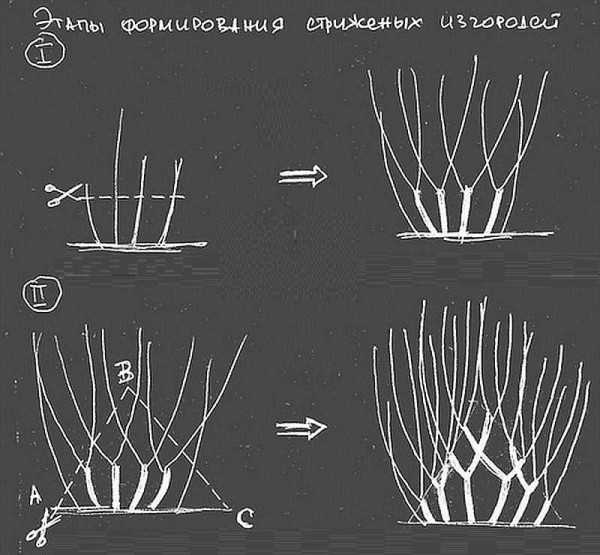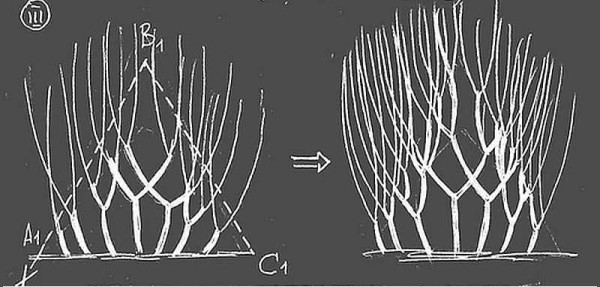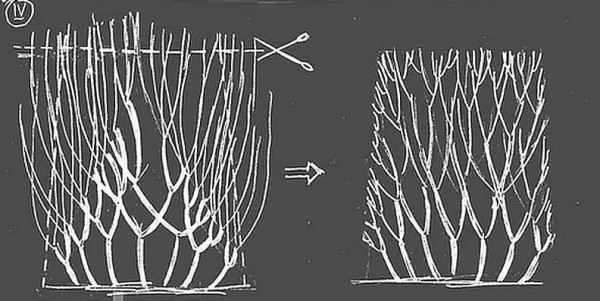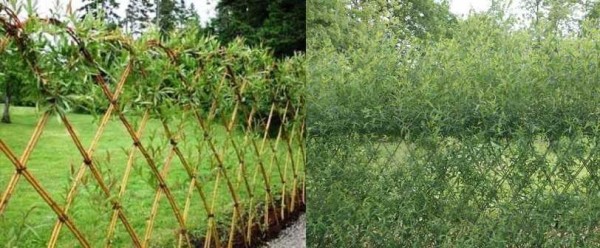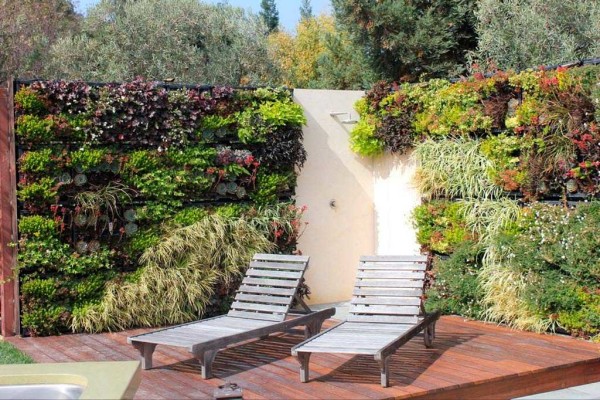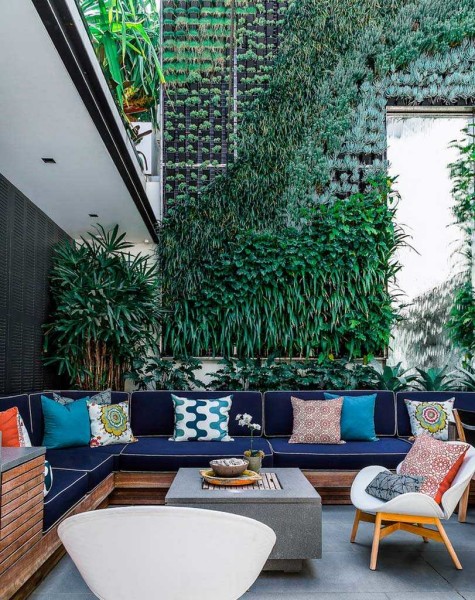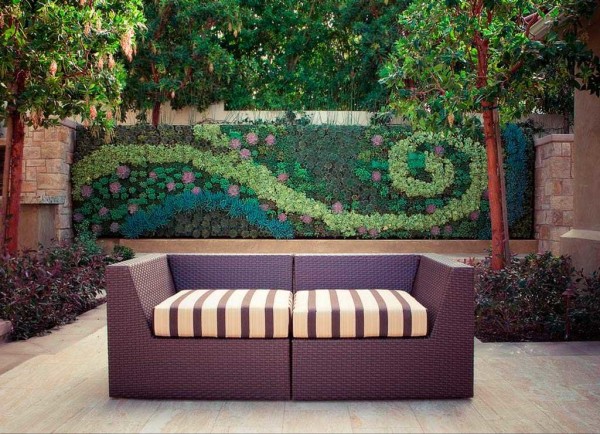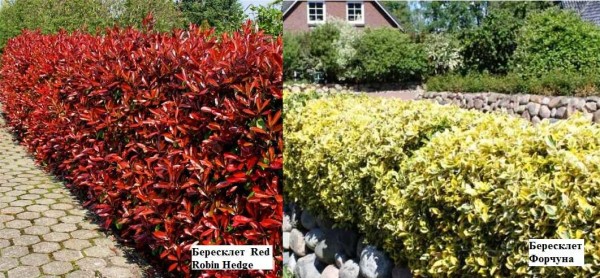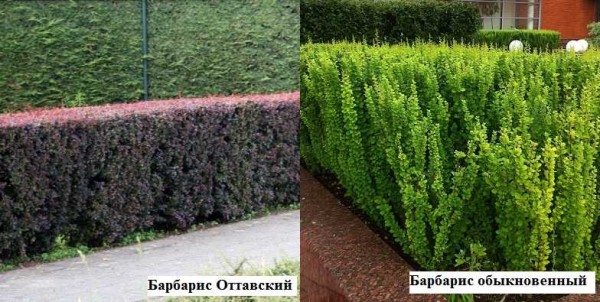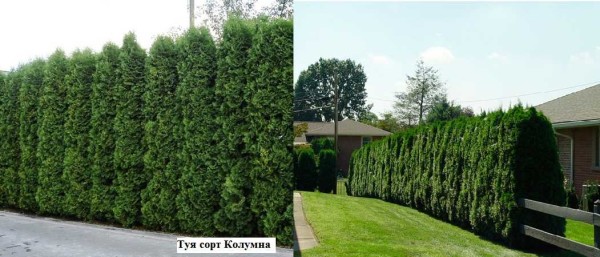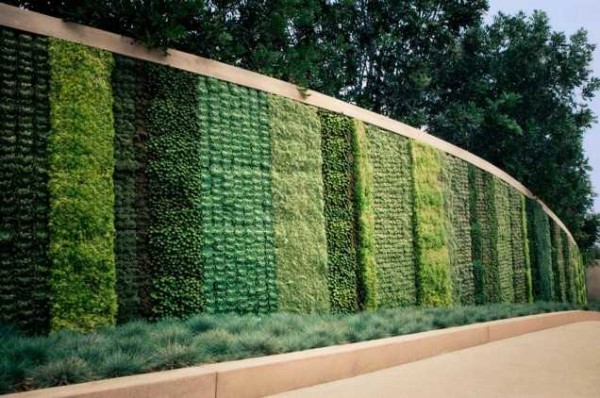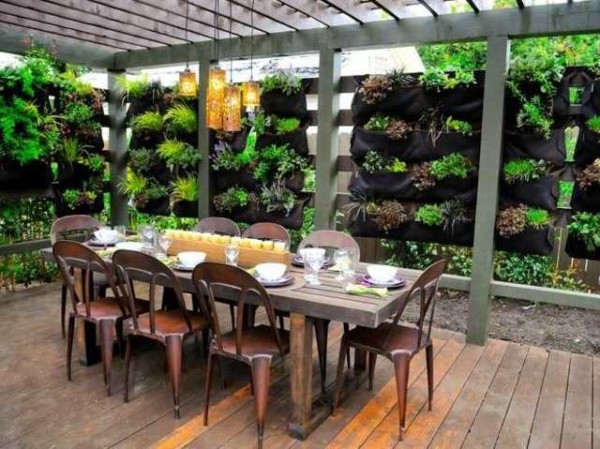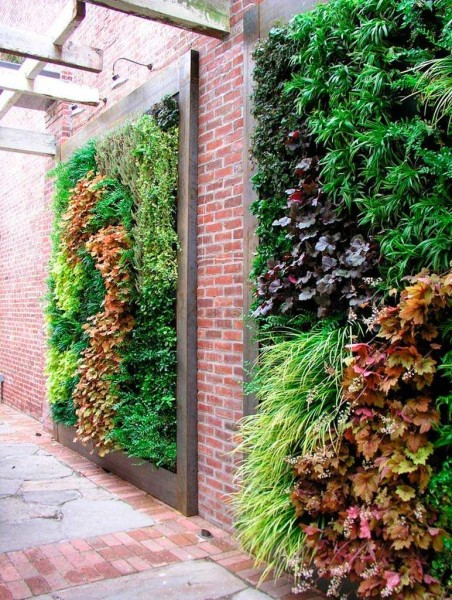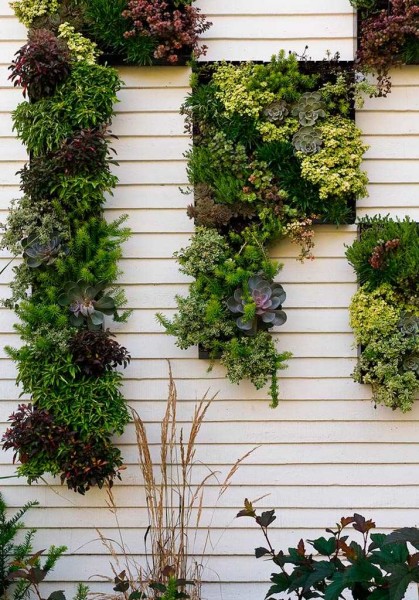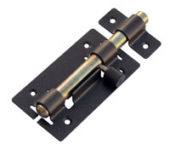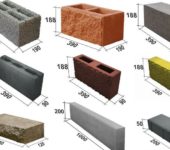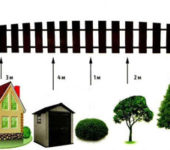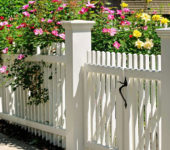Fence hedge: how to grow and shape
Looking at ordinary fences, no matter how beautiful, is a dubious pleasure. In order to make them look more attractive, they are decorated in all possible ways. One of the most effective is a hedge. With its help, you can not only close yourself from prying eyes, but also reduce the amount of dust on the site, as well as reduce the noise level. But this is possible if the green fence is high and dense enough.
The content of the article
Types of hedges and plants for them
In height, a hedge can be low - up to 50 cm, average from 60 cm to 150 cm, and high - above 160 cm. By the composition of plants - coniferous, deciduous, flowering, by the type of arrangement - single-row or double-row. All of them can be clipped or free-growing. Only a list of species speaks of a great variety, and even a living fence can be made up of different plants. The type of hedge is selected depending on its purpose.
Low
A low hedge is also called a curb. It can reach a height of half a meter. It is most often used as a living green frame for a flower garden or flower bed, to indicate zones on a site, simply for the purpose of decorative design. In this case, they choose from shrubs, some herbaceous or flowering plants. For trimmed hedges of small height, the following are suitable:
- undersized evergreen boxwood and euonymus,
- dwarf forms of garden jasmine,
- magnolia holly,
- Erika;
- barberry and cotoneaster;
- mountain pine Pug;
- thuja western;
- juniper is columnar.
If the curb (low hedge) is planned to be free-growing, you can plant:
- rosehip;
- spirea Bumald (Japanese or Niponskaya);
- shrub and dahurian cinquefoil;
- roses;
- Lawson's cypress.
These are just some of the possible options, but the named plants form a dense wall of leaves and flowers, are relatively easy to care for, and can grow in central Russia. Just before the final choice, be sure to clarify the zoning of the selected plant, as well as the conditions and features of its cultivation. Choose according to the type and acidity of the soil, as well as the difficulty of care and susceptibility to disease.
If the hedge grows near the house of permanent residence, more attentive and careful care is possible for it, Therefore, you can select from a little more capricious varieties. At the dacha, it is definitely necessary to choose unpretentious plants. This principle holds true for plant selection and for medium to tall green fences.
Medium height
If you need a fence made of plants up to 1.5 meters high, they speak of a hedge. It can use both flowering and fruiting shrubs, some types of trees. If such a hedge performs a protective function, thorny shrubs can be used in it - barberry, rose hips, tall roses, dogwood. In addition to the already named plants, you can also plant without pruning:
- fruiting - irga, dogwood, hazel, honeysuckle (common, blue, Tatar), golden currant, pyracantha Bright red;
- flowering - lilac, forsythia, chubushnik, hydrangea, hawthorn, derain, yellow acacia
- with dense foliage - privet, euonymus, cotoneaster, evergreen boxwood, Wangutta spirea;
- conifers - thuja western, Canadian spruce, green, blue, Siberian fir, berry yew, juniper;
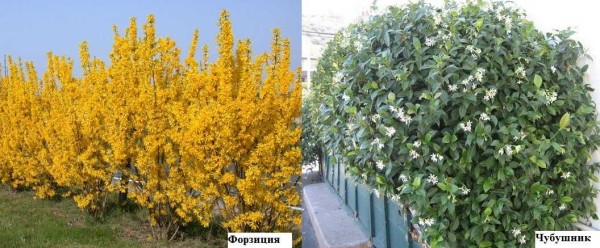
Forsythia blooms very beautifully and abundantly in spring, then overgrows with dense elongated foliage. Chubushnik is not so decorative in color, but its leaf is glossy
A green hedge is often used only to disguise or complement the main fence. In such cases, the surface of the fence can be used as a support for plants - this is if it needs to be completely masked.
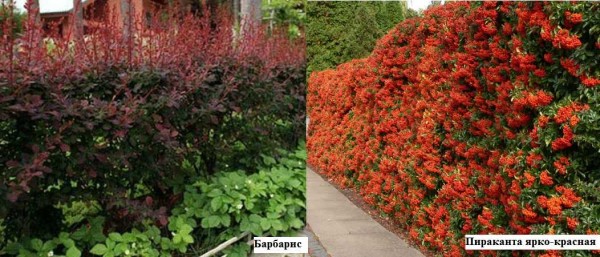
Barberry of different varieties has a different leaf color. Pirkata can bear fruits from bright red odes of yellow, they persist on the branches in winter, until they are eaten by birds
One point: if you are going to close with plants fence made of corrugated board, you will have to try very hard: it heats up very much in the sun, which is why all the plants at a decent distance simply burn out. If you do plan to plant a hedge, you will have to somehow protect the plants from the heat. At least knock down the wooden shields that will temporarily stand along the landing line, reflecting the heat.
High are living walls
For tall hedges (over 1.5 meters), plants are more often used, although some tall shrubs may well grow up to 2 meters or more:
- evergreen and conifers - spruce, fir, thuja, yew, juniper (columnar, middle, Chinese), high varieties of evergreen boxwood, pea cypress;
- fruit trees and berry bushes - berry apple, cherry plum, irga (Tatar, spikelet), buckthorn, viburnum;
- deciduous - small-leaved linden, pedunculate oak, maple;
- flowering - lilac (tall varieties), honeysuckle, chubushnik;
Fast growing hedge plants
Fences made of plants are very beautiful, but it takes years to form a complete fence. Conifers grow especially long and slowly. For example, thuja will grow to a height of 1.5 m for about 5 years, and yew berry in general 8, but they are pleasing to the eye all year round. Some shrubs add in growth per year more than others - from 50 cm to 1 meter, and they can be used for planting and quickly forming a living fence.
- Siberian beetleCrataegus sanguinea with yellow flowers - up to 1 meter per year;
- shrub willows;
- blackberries, rose hips, climbing roses (support required);
- spreading hazel - up to a meter or more per year;
- Kalinolistny biculus - under favorable conditions, shoots grow up to 1 m;
- derain.
Hedge planting and maintenance
Creating a green fence begins with plant selection. Please note that they must all be of the same age. This is the only way to form an even line. If these are deciduous plants, the age of the seedlings is 2-3 years, if conifers are 3-6 years. If planting is planned in a shaded area, the age of plants for planting in a hedge is more - 7-8 years. In such conditions, they grow very slowly, and more or less mature plants will immediately give some form.
| Hedge type | Distance between plants in a row | Distance between rows |
|---|---|---|
| High clipped hedge (2-6 m) | 0.8 - 1.2 m | 1m |
| Medium trimmed hedge (0.6 to 1.5 m) | 0.4 - 0.6 m | 0.8 - 1 m |
| Free-growing high hedge (2 to 6 m) | 1 - 2 m | 2 - 3 m |
| Free growing medium (0.6 - 1.5 m) | 0.8 - 1 m | 1 - 1.5 m |
Planting distances in hedges
In the middle lane and closer to the north, planting begins in the spring, in the south, it can be planted before winter - in the fall. It all starts with the formation of planting trenches.
- Trenches 50-60 cm deep are dug according to the markings applied.
- A layer of fertile soil of a suitable composition is poured.
- At the required distance (see the table above), seedlings with a wrapped root system are laid out. Unfold it just before landing.
- In order for the plants to take root well, it is not necessary to break the existing clod of earth. The soil is poured and compacted around the root system. How exactly to plant: to deepen or, conversely, to plant on a hill - depends on the type of plant. Check before work.
- Immediately after planting, the plants are watered, and the soil is sprinkled with mulch - peat, humus, crushed bark. This will keep moisture in.
Further, the first year of care consists in regular watering, loosening the soil, removing weeds, and periodic fertilization. All activities are spelled out in the recommendations for caring for a specific type of plant. Here they must be observed.
Pruning may be necessary in the fall. Even if the hedge grows freely, it does not mean that it does not need to be formed. She does not need to be given the correct geometric shape, and trimming is as necessary for her as for a shorn one.
Rules for pruning an unformed hedge
As already mentioned, even a free-growing green hedge requires pruning. The first one is carried out immediately after landing. At the same time, powerful lateral shoots are formed, and by the end of summer the bushes become more branched. The second pruning takes place in the fall and then for 3-4 years the bushes are pruned quite shortly until the required shoot density is reached.
One of the most effective methods is undergrowth pruning. It uses the ability of all deciduous shrubs to activate dormant basal buds. The stages of pruning the first year are shown in the photo below.
When planting, weak, thin shoots are almost completely cut off, and strong ones are shortened to the first strong bud. By the fall, new shoots will appear from the root, and those left in the spring will give new ones.
When the sap flow stops, all the shoots are cut low, leaving short stumps. Cropping shape - as in the photo - in an arc. During the second season, the bush will become much denser, several new shoots will appear from the root, two or three powerful branches will leave the "old" ones.
In the third year and then for another 2-3 years, pruning is done according to the same principle as in the second year, only the branches are pruned 3-4 cm higher than in the previous year. Further pruning is also strong, but about 3/4 of the length is cut. This technique is good for those shrubs that form flower buds at the ends of young shoots.
According to this principle, you can very quickly form a dense hedge from curb - undersized plants, as well as from some medium-sized ones:
- cinquefoil;
- wrinkled rose;
- panicle hydrangea;
- fieldfare rowan-leaved;
- white dogwood (decorative varieties);
- Spirea Vagnut, Japanese;
The disadvantage of this method is that it strongly activates the formation of basal shoots. Very aggressive varieties can produce abundant growth within a few meters of the bush. Therefore, it is advisable to limit the root zone during planting by digging in a sheet of asbestos, plastic, metal.
Hedge trimming
Many budding gardeners believe that before starting to form a hedge, it needs to be allowed to grow. You can wait a year or two only with conifers, deciduous ones must be cut immediately after planting, and then in the fall, otherwise after 2-3 years of free chaotic growth it will be either very difficult or even impossible to do something with the plant.
Before you start molding, you need to select a shape. Please note that hedges with a straight top have to be cut frequently or they will lose their decorative effect. And since growth is the most active in the upper zone, it is here that the ideality of the lines is violated in the first place, while on the side surfaces they are still normal.If there is no possibility or desire to carry out a regular haircut, choose a shape with a round or triangular top. Even with a missed cut, they look normal.
In the first year, all shoots are shortened to a significant part of the height. If these are plants that are sold with bare roots in bundles, they can be cut to half their length, if container plants were planted, cut to 1/3 of the height, or not cut at all. In autumn, the bush looks like in the photo, the picture is at the top right. With strong pruning, the formation of new shoots is stimulated, therefore by the end of summer the bushes become much thicker. This completes the first stage.
The second stage is the formation of the skeleton. If we look inside the already formed hedge, we will see a powerful frame of bare shoots, from which there are a large number of young, with abundant foliage. It is this frame that needs to be formed. However, it must be thick enough so that the surface is dense and opaque. The process begins already in the second year after disembarkation, and continues for 2-3 years. During this period, the frequency of pruning can be up to 4-5 times per season.
The task is to achieve the required density of the "skeleton". Trimming is done according to the selected shape. The photo shows an example of the formation of a frame. Such trimming must be adhered to in any final shape, only raising or lowering the apex of the triangle - depending on how long and narrow the fence is planned. If it is wider, the top is lowered a little, if you need a narrow and high one, it is raised, and the base is made narrower. From year to year, pruning is done a little higher, literally 3-4 cm. As a result, new shoots are actively sprouting, and those that have been forming new forks, skeletal branches become more and more branched.
After the required shoot density is reached, forcing in height begins. This is the third stage. On it, the trimming height is raised more actively - by 5-10 cm at a time. Shoots actively growing upward are pruned until the required density of lateral shoots is obtained. The foliage should be dense. Provided that pruning is carried out several times per season, growth is quite active. At the same time, new shoots are formed, but there are not so many of them as before.
The frequency of pruning depends on the type of plant:
- plums and hawthorns are cut from May to October three or four times;
- thuja, juniper, cotoneaster, snowberry, barberry - once in summer (July-August), once in October.
Cut so that the side filling forms along with the hood upwards. To avoid gaps it is better to "lift" the bush more slowly. Then it will be more difficult to fix.
The last step is to give the desired shape. Next is a regular haircut that maintains its shape.
For this type of hedges are very good in our conditions:
- teren;
- Ottawa barberry;
- blood red hawthorn;
- the cotoneaster is shiny;
- the snowberry is white.
Willow hedge
Willow can be grown into a very special green hedge. It can be woven from freshly cut willow branches, which are simply buried in the ground. Such a landing is accepted with a very high probability. Branches can even be stuck in at both ends, forming an arc. The willow will take root from both ends at once. To speed up the process, the top of the shoot is cut off, the bark is cut lengthwise in two places for a couple of centimeters. Thus, the prepared shoot is stuck into the ground.
Using this feature, you can weave a hedge, which will turn green in a few weeks. The prepared shoots are buried 15 cm, the ground around is tightly squeezed, the planting is watered.To make it look more and more attractive - the dried ends of the branches do not stick out - bend the twigs. In the places of intersection, they can be intertwined with each other, or they can be tied. If the branches are too thin, you can use two twigs, as well as periodically put props that will hold wattle in place.
The disadvantage of such a fence is that it only has a decorative appearance for a few years. After the shoots become woody, the greenery practically disappears. But the fence from this does not become less reliable. On the contrary, it is difficult to break through such a wall - the branches are rigidly woven.
Green fence in a couple of weeks
If you wait for shrubs or trees to grow for a long time, then herbaceous plants will give abundant greenery in a couple of weeks. This can be used if you need to decorate an unsightly wall or part of the fence that is in plain sight.
A wooden lattice is made, into which square containers with planted plants are inserted sideways. To prevent soil from falling out of them, the containers are covered with black agrofibre. A very small hole has been made in it, into which the plant looks out.
On well-lit surfaces with sufficient watering, the wall or fence will very soon become green-furry. If you wish, you can lay out living pictures in this way - using plants with foliage of different colors.
Photo of hedges from different plants
Often, even from a general photograph of a plant, it is difficult to imagine how it looks in a hedge. We tried to find the most popular and decorative plants. Moreover, this is a photo of hedges, and not just plants.
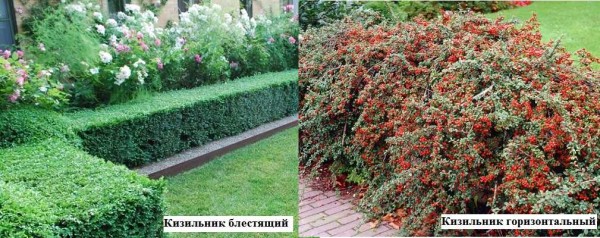
Different types of cotoneaster. One is good for a sheared live fence, the other is good for free growing
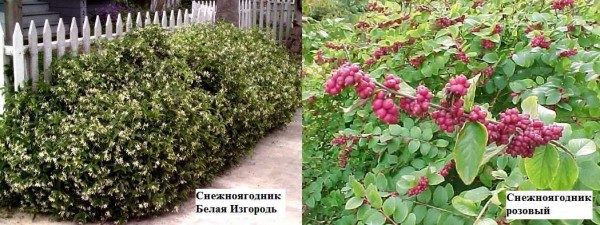
The snowberry is very decorative after the fruit appears. They hang on branches under the snow, for which they got the name
Now a few examples of how container plantings can be used to decorate a wall or fence.

